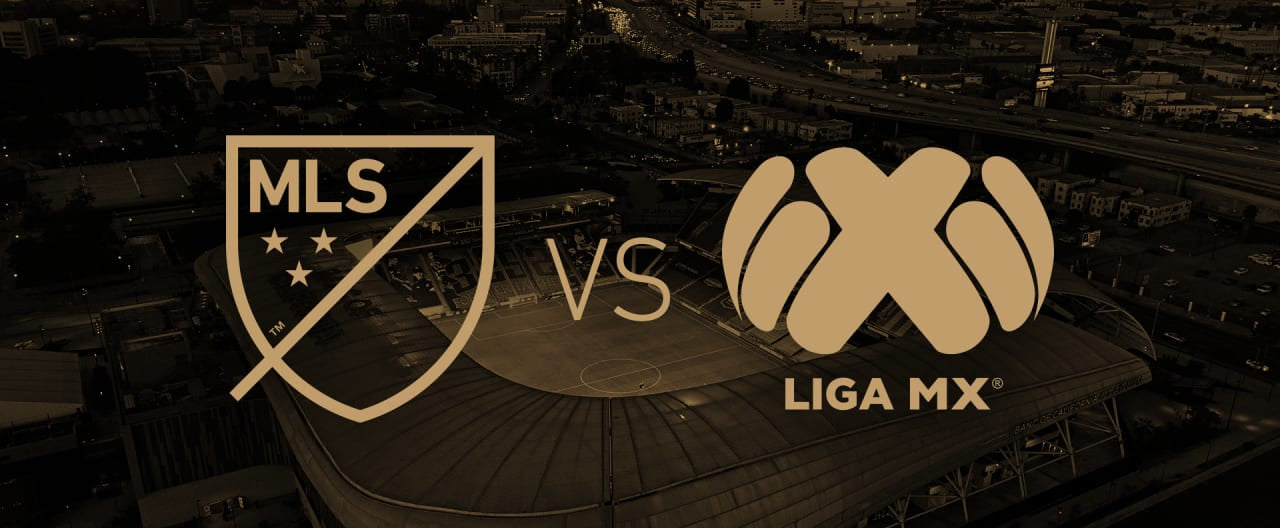Votre panier est vide

LIGA MX vs MLS
mars 11, 2024 4 min read
Title: A Comparative Analysis: LIGA MX vs. MLS – Unraveling the Rivalry and Evolution of North American Soccer
In the realm of North American soccer, two leagues stand out prominently: Mexico's Liga MX and the United States' Major League Soccer (MLS). Both have significantly contributed to the growth and popularity of football in the region. However, a comparative analysis of these two leagues unveils a fascinating tale of contrasting histories, structures, fan cultures, and playing styles. This exploration aims to dissect the differences and similarities between Liga MX and MLS, shedding light on their respective strengths, weaknesses, and the ongoing rivalry that shapes the landscape of North American football.
Historical Context: Liga MX traces its roots back to 1943 when it was established as the Mexican Primera División. Over the decades, it evolved into one of the most competitive and revered leagues in Latin America, boasting a rich history of legendary clubs, fierce rivalries, and passionate supporters. On the other hand, MLS emerged much later, inaugurated in 1996 with a vision to popularize soccer in the United States and Canada. Initially faced with skepticism and challenges, MLS gradually solidified its presence, expanding its reach and elevating the standard of football in North America.
League Structure and Governance: One of the fundamental disparities between Liga MX and MLS lies in their organizational frameworks. Liga MX operates under a promotion and relegation system, wherein teams from the lower divisions can ascend to the top tier based on their performance. This system fosters intense competition and ensures that every match carries significant stakes. In contrast, MLS adheres to a closed structure, devoid of promotion and relegation. The league's expansion is carefully orchestrated, with franchises being awarded to cities rather than earned through sporting merit. While this model provides stability and financial security to clubs, it has sparked debates regarding its impact on sporting integrity and upward mobility.
Player Development and Talent Pool: The development of homegrown talent is a crucial aspect of any football league's sustainability and competitiveness. In this regard, MLS has made significant strides in recent years, investing in youth academies and nurturing local talent through its designated player and homegrown player initiatives. Nevertheless, Liga MX holds the upper hand in terms of player development, boasting a robust youth system and a deep talent pool that consistently produces world-class players. The Mexican league's emphasis on grassroots football and player recruitment from across Latin America has propelled its clubs to international prominence, attracting top talents and fostering a culture of excellence on the pitch.
Financial Landscape and Investment: Financial disparity between Liga MX and MLS is another factor that distinguishes the two leagues. Liga MX clubs benefit from lucrative television deals, sponsorship agreements, and a fervent fan base, enabling them to invest heavily in player recruitment and infrastructure. Moreover, the league's proximity to the lucrative Latin American market amplifies its commercial appeal, attracting investors and sponsors from the region. In contrast, while MLS has experienced steady growth in revenues and franchise valuations, it still lags behind Liga MX in terms of financial clout. However, the recent influx of investment from wealthy owners and corporations signals a promising trajectory for the league, with ambitions to rival its Mexican counterpart in the near future.
Playing Style and Tactical Diversity: The contrasting playing styles exhibited in Liga MX and MLS reflect the diverse cultural influences and footballing philosophies prevalent in their respective countries. Liga MX is renowned for its fast-paced, technically adept brand of football, characterized by quick passing, flair, and creativity on the ball. Mexican clubs often prioritize attacking prowess and fluidity in their gameplay, resulting in high-scoring encounters and thrilling spectacles for fans. In contrast, MLS teams tend to adopt a more pragmatic approach, emphasizing physicality, athleticism, and tactical discipline. While MLS has witnessed a gradual shift towards possession-based football and tactical innovation in recent years, it still grapples with inconsistencies in quality and cohesion compared to its Mexican counterpart.
Fan Culture and Atmosphere: The fervor and passion exhibited by fans in Liga MX and MLS encapsulate the essence of football culture in North America. Mexican football aficionados are renowned for their unwavering support, colorful displays, and electrifying atmospheres inside packed stadiums. Whether it's the iconic Estadio Azteca in Mexico City or the raucous cauldron of Monterrey's Estadio BBVA, Liga MX matches offer a sensory overload for spectators, immersing them in a pulsating sea of chants, cheers, and celebrations. In contrast, MLS has experienced challenges in cultivating a comparable fan culture, owing to factors such as geographical sprawl, stadium accessibility, and cultural diversity. While certain MLS clubs boast passionate supporters and vibrant matchday experiences, the league as a whole continues to strive for greater fan engagement and community integration.
The rivalry between Liga MX and MLS transcends the boundaries of sport, embodying the cultural, economic, and social dynamics of North America. While each league possesses unique strengths and weaknesses, their coexistence has catalyzed the growth of football in the region, fostering healthy competition and mutual respect. As Liga MX and MLS continue to evolve and adapt to the ever-changing landscape of global football, the prospect of a harmonious convergence looms on the horizon, promising a future where North American soccer ascends to unprecedented heights of excellence and inclusivity.

Soccer Wearhouse
the premier provider of soccer jerseys, footwear, balls, accessories and other equipment. Soccer Wearhouse has four retail locations in Southern California.




